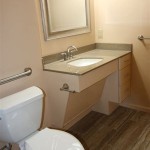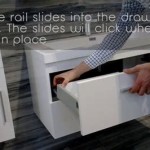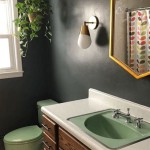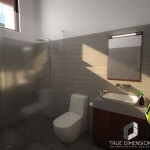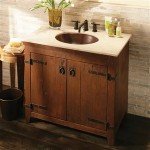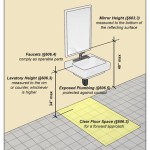How to Fix a Bathroom Pull Cord Switch
Bathroom pull cord switches offer a safe and convenient way to control lighting in damp environments. However, like any electrical component, they can malfunction. This article provides a comprehensive guide to troubleshooting and repairing common issues with bathroom pull cord switches.
Safety Precautions
Working with electricity always carries risks. Before attempting any repair, ensure the power supply to the bathroom light is turned off at the consumer unit (fuse box). Use a voltage tester to double-check that the power is off before touching any wires. If unsure about any step, consult a qualified electrician.
Diagnosing the Problem
Identifying the cause of the malfunction is crucial for effective repair. Several issues can occur with pull cord switches:
Common Pull Cord Switch Problems
Several factors can contribute to a malfunctioning pull cord switch. Understanding these helps in identifying the problem and choosing the correct solution.
1. Broken Cord
A frayed or broken cord is a common issue. The cord wears out over time due to repeated pulling. This can prevent the switch mechanism from activating.
2. Stuck Mechanism
The internal mechanism of the switch can become jammed or stuck due to dust, debris, or wear and tear. This can prevent the switch from toggling between on and off positions.
3. Loose Connections
Loose wire connections within the switch can interrupt the circuit, preventing the light from functioning correctly. Vibrations or age can cause these connections to loosen.
4. Faulty Switch
If the cord and connections are intact, the switch mechanism itself might be faulty. Internal components can wear out or break, requiring a replacement switch.
Tools and Materials
Gather the necessary tools and materials before starting the repair. Having everything on hand streamlines the process and avoids unnecessary delays.
Required Tools and Materials
Prepare the following before beginning repair work:
1. Screwdriver
A flathead and Phillips head screwdriver are typically required for removing the switch cover and accessing internal components.
2. Voltage Tester
A voltage tester is essential for confirming the power is off before working on the switch.
3. Replacement Cord (if needed)
If the cord is broken or frayed, a replacement cord will be necessary. These are readily available at hardware stores.
4. Replacement Switch (if needed)
If the switch mechanism is faulty, purchase a compatible replacement switch. Ensure the new switch matches the voltage and amperage requirements of the existing fixture.
5. Wire Strippers/Cutters (if needed)
Wire strippers and cutters are necessary for trimming and preparing wires for connection if replacing the switch or cord.
6. Electrical Tape (if needed)
Electrical tape helps secure wire connections and provides insulation.
Repairing the Switch
Once the problem is diagnosed and the necessary tools and materials are gathered, the repair process can begin. Follow these steps carefully:
Steps for Repairing the Switch
Undertake the following steps, ensuring safety precautions are adhered to throughout the process:
1. Isolate the Power
Turn off the power to the bathroom light circuit at the consumer unit. Double-check that the power is off using a voltage tester.
2. Remove the Switch Cover
Carefully remove the switch cover using a screwdriver. This will expose the internal components of the switch.
3. Inspect the Cord
Check the pull cord for fraying or breakage. If damaged, replace the cord by detaching it from the switch mechanism and attaching the new cord following the manufacturer’s instructions.
4. Check the Mechanism
Inspect the switch mechanism for any signs of damage or obstruction. If jammed, attempt to gently free the mechanism. If broken or worn, replace the entire switch unit.
5. Tighten Connections
Check all wire connections within the switch for tightness. Tighten any loose connections using a screwdriver. Ensure the wires are securely fastened to the terminals.
6. Reassemble the Switch
Once the repairs are complete, reassemble the switch by carefully placing the cover back on and securing it with the screws.
7. Restore Power
After confirming all connections are secure and the switch is properly assembled, turn the power back on at the consumer unit. Test the switch functionality by pulling the cord.
Seeking Professional Help
If the problem persists after troubleshooting or if you are uncomfortable working with electrical components, it is recommended to contact a qualified electrician. An electrician can safely diagnose and repair any electrical issues in your bathroom.

How To Replace A Pull Cord Switch Fitting Or Repairing Bathroom Switches

How To Replace A Pull Cord Switch Fitting Or Repairing Bathroom Switches

How To Change A Pull Switch In Bathroom

How To Repair Change A Pull Cord Light Switch Explanation

How To Repair Change A Pull Cord Light Switch Explanation

Bathroom Pull Switch Replace Sparky Question Page 1 Homes Gardens And Diy Pistonheads

How To Change A Bathroom Pull Cord Switch And Use Non Contact Detect Voltage Detector

How To Replace A Pull Cord Light Switch Your Local Electrician

How To Install A One Way Light Switch Socketsandswitches Com

How To Replace A Pull Cord Light Switch Your Local Electrician
